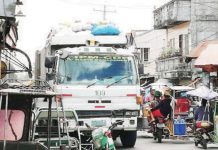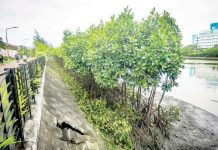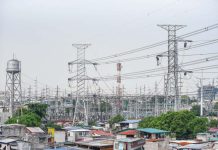
ADDING a “substantial” share of nuclear power in the Philippines’ energy mix will prevent electricity supply issues that recently triggered the raising of red and yellow alerts in the Luzon grid, according to the head of the Department of Science and Technology – Philippine Nuclear Research Institute (DOST-PNRI).
DOST-PNRI director Carlo Arcilla said at least 20 percent to 30 percent of nuclear energy would be considered a “substantial” share.
“If the electricity mix contains substantial nuclear, that won’t happen. Because the capacity factor of nuclear is 90 percent. The more you increase the percentage of nuclear in the mix, the more reliable the electricity, less dependent on weather,” he explained.
“The plant maintenance is scheduled – one month every 18 months. Walang sudden breakdowns kasi tuloy-tuloy ‘yan eh. It’s very predictable,” Arcilla added.
The Philippines targets to make nuclear energy part of its energy mix by 2032, President Ferdinand Marcos Jr. said in November 2023, following the signing of the “123 agreement” with the United States. The deal provides the legal basis for the US to export nuclear technology to the Philippines for peaceful uses.
Marcos earlier called for “the reevaluation of the possibility of safely developing nuclear energy in the Philippines,” as he recognized “the enormous potential of energy, given the highly advanced technologies and standards of safety, security and all the different safeguards that are now in place.”
SAFETY CONCERNS
Arcilla and House Committee on Nuclear Energy chairperson and Pangasinan 2nd District’s Rep. Mark Cojuangco allayed concerns about the safety of operating nuclear power plants.
“There have only been two accidents known: the Chernobyl, which was done because it was an illegal experiment, and Fukushima. In Fukushima, the plant was not destroyed by the earthquake. It was destroyed because the cooling system was put below. So binaha ‘yung cooling system ng tsunami,” he said.
“All the 450 nuclear plants in the world after Fukushima did a stress test. How will you prevent a Fukushima? You put the cooling systems at a higher elevation. It makes the possibility of a nuclear accident even much, much, much lower,” Arcilla added.
“In Chernobyl, they don’t have a containment structure. We have here a containment structure,” the PNRI chief said, noting the design differences between Soviet plants and Western plants.
Cojuangco meanwhile insisted that nuclear is the safest source of energy. (ABS-CBN News)







